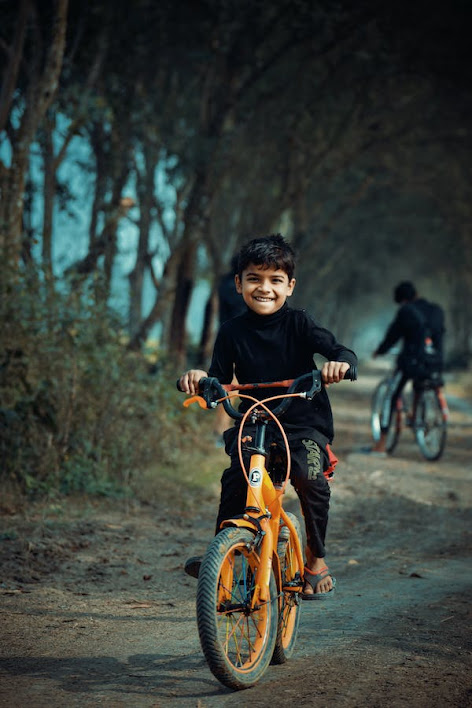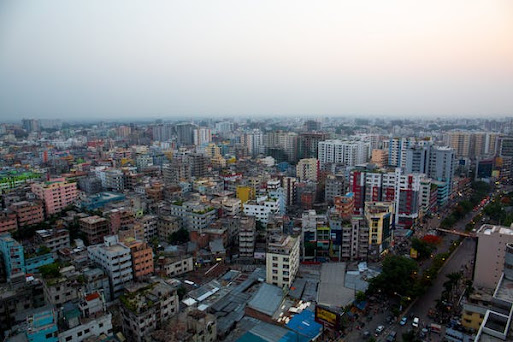Explore Bangladesh: A Journey through its
Rich Heritage
Introduction
Overview of Bangladesh's rich heritage
Importance of heritage in creating the nation's identity
A Brief History of Bangladesh
Ancient civilizations
Influence of different empires and rulers
Bangladesh's Cultural Diversity
Ethnic groups and their cultural practices
Traditions and customs across regions
Historic Sites in Bangladesh
H1: Paharpur Monastery
Architectural significance
Historical background
H1: Lalbagh Fort
Mughal architecture
Cultural relevance
UNESCO World Heritage Sites
The significance of Paharpur and the Sundarbans
Contribution to global heritage
Language and Literature
H2: Bengali Language
Origins and development
H2: Literary Contributions
Notable authors and poets
Music and Dance
Traditional Bengali music and instruments
Forms of dance across different regions
Art and Craftsmanship
H2: The Jamdani Weave
Historical roots and significance
H2: Terracotta Art
Popularity in ancient architecture
Religion and Festivals
H2: Islam as the Major Religion
Influence on the nation’s traditions
H2: Hinduism, Buddhism, and Other Religions
Coexistence and religious harmony
H2: Major Festivals
Celebration of Eid, Durga Puja, Pohela Boishakh, and more
Cuisine of Bangladesh
Traditional dishes and their cultural importance
Regional variations in food
Natural Wonders of Bangladesh
Sundarbans and Royal Bengal Tigers
Cox's Bazar, the world's longest sea beach
The Struggle for Independence
The role of heritage in the fight for independence
Key figures and events in Bangladesh's liberation war
Preservation of Heritage
Efforts in preserving historical monuments
Importance of conservation for future generations
Tourism in Bangladesh
How heritage and culture attract tourists
Emerging tourist destinations
Conclusion
Reflecting on the richness of Bangladesh’s heritage
Encouraging exploration of the country's history
FAQs
Why is Bangladesh’s cultural heritage important?
What are the must-visit heritage sites in Bangladesh?
How has religion shaped Bangladesh’s heritage?
What are some famous traditional crafts of Bangladesh?
Why should tourists explore Bangladesh’s heritage?
Explore Bangladesh: A Journey through its Rich Heritage
Introduction
Bangladesh, a land of vibrant culture, rich
traditions, and deep history, offers a captivating
glimpse into the heart of South Asia. Despite being
a relatively young nation, Bangladesh boasts a
heritage that stretches back thousands of years.
From its ancient civilizations to its dynamic
present, the country has been shaped by its unique
history, blending the influences of empires,
religions, and cultural movements. Exploring
Bangladesh’s heritage is like taking a journey
through time, where every corner reveals
something new about its identity and resilience.
A Brief History of Bangladesh
The history of Bangladesh is layered with the
legacies of various empires, from the Mauryan
and Gupta dynasties to the Bengal Sultanate
and the Mughal Empire. These civilizations left
their mark through monumental architecture,
literature, and a blend of religious traditions
that shaped the country. Over time, Bangladesh
became a melting pot of cultures, all
contributing to its rich heritage.
In 1971, after a long and bloody struggle,
Bangladesh gained independence from
Pakistan, marking a new chapter in its history.
The Liberation War is an integral part of the
nation's identity, reflecting the spirit of
resilience and freedom that has always been
present in its people.
Bangladesh's Cultural Diversity
With over 160 million people, Bangladesh is home
to a variety of ethnic groups, each with its own
distinct customs, language, and traditions. The
largest group is the Bengali people, but there are
also indigenous groups such as the Chakma,
Marma, and Santhal, who add to the cultural
tapestry of the country. These diverse communities
contribute to the vibrancy of Bangladesh's culture,
where traditional dances, music, and rituals are
performed throughout the year.
Historic Sites in Bangladesh
Paharpur Monastery
Paharpur, also known as Somapura Mahavihara, is
one of the most important archaeological sites in
Bangladesh. This ancient Buddhist monastery is
recognized for its architectural brilliance and is a
UNESCO World Heritage site. Built in the 8th
century during the reign of the Pala dynasty,
Paharpur was once a thriving center for Buddhist
learning, attracting scholars from across Asia.
Lalbagh Fort
Located in Dhaka, Lalbagh Fort is a stunning
example of Mughal architecture. Though
incomplete, this 17th-century fort showcases the
grandeur of the Mughal era with its intricate
designs, gardens, and the impressive tomb of Pari
Bibi. Today, Lalbagh Fort remains a popular tourist
destination, offering a window into the Mughal
influence on Bangladesh's history.
UNESCO World Heritage Sites
In addition to Paharpur, Bangladesh is home to
other UNESCO World Heritage Sites, including
the Sundarbans. This vast mangrove forest, the
largest in the world, is home to the endangered
Royal Bengal Tiger and countless other species of
wildlife. The Sundarbans play a crucial role in the
ecological and cultural fabric of Bangladesh,
symbolizing the country's deep connection with
nature.
Language and Literature
Bengali Language
The Bengali language, one of the richest and
most expressive languages in the world, is a core
part of Bangladesh’s cultural identity. It has its
roots in the ancient Prakrit languages and has
evolved over centuries to become the modern
language spoken by millions today. The Bengali
Language Movement of 1952, which led to the
recognition of Bengali as the official language of
Bangladesh, is a testament to its importance in
the nation's history.
YOU WILL ALSO LIKE : Mystical Myanmar: Unraveling its Wonders
YOU WILL ALSO LIKE : China: A Comprehensive Overview of a Remarkable Nation
YOU WILL ALSO LIKE : Exploring the Vibrant Tapestry of India
Literary Contributions
Bangladesh has produced some of the most
notable figures in South Asian literature,
including the Nobel laureate Rabindranath
Tagore and national poet Kazi Nazrul Islam.
Bengali literature, from poetry to novels,
reflects the rich cultural and political history of
the region, often addressing themes of
nationalism, identity, and the human condition.
Music and Dance
Traditional Bengali music, deeply influenced by
spiritual and folk traditions, is an essential part
of Bangladesh’s heritage. Baul music, known
for its soulful lyrics and unique instruments like
the ektara, is a beloved folk genre. Classical
dance forms, such as the Manipuri and the
indigenous dance styles of various ethnic
groups, continue to be performed, preserving
the artistic legacy of the region.
Art and Craftsmanship
The Jamdani Weave
Jamdani, a fine muslin fabric that dates back to
the Mughal period, is one of Bangladesh’s most
renowned handicrafts. Known for its intricate
designs and luxurious feel, Jamdani weaving
has been recognized by UNESCO as an
Intangible Cultural Heritage of Humanity. The
craftsmanship involved in creating these textiles
reflects the deep-rooted artistic traditions of
Bangladesh.
Terracotta Art
Terracotta art, commonly found in ancient
temples and palaces, showcases the skill of
Bangladeshi artisans. This form of decorative
art reached its height during the Gupta and
Pala periods, with intricately carved panels
depicting stories from Hindu mythology and
everyday life.
Religion and Festivals
Islam as the Major Religion
Islam is the predominant religion in
Bangladesh, influencing many aspects of the
nation's culture, architecture, and daily life.
However, Bangladesh is also known for its
religious tolerance, with large Hindu, Buddhist,
and Christian communities living in harmony.
Major Festivals
Festivals are a vital part of Bangladeshi culture,
with major celebrations like Eid al-Fitr, Durga
Puja, and Pohela Boishakh (the Bengali New
Year) drawing people from all walks of life
together in joyous celebration.
Cuisine of Bangladesh
Bangladeshi cuisine is a reflection of its rich
heritage, with influences from Mughal, Persian,
and regional culinary traditions. Rice, fish, and
lentils are staples, with dishes like biryani, pithas
(rice cakes), and bhorta (mashed vegetables) being
local favorites. Each region has its own unique
flavors, adding to the culinary diversity of the
country.
Natural Wonders of Bangladesh
The natural beauty of Bangladesh is as much a part
of its heritage as its historic sites. From the lush
mangroves of the Sundarbans to the golden sands
of Cox's Bazar, Bangladesh offers breathtaking
landscapes that attract tourists and nature lovers
alike.
The Struggle for Independence
The Liberation War of 1971 is one of the most
significant events in Bangladesh’s history. The
struggle for independence from Pakistan not only
gave birth to a new nation but also cemented the
country’s cultural and national identity. Key
figures like Sheikh Mujibur Rahman, the founding
father of Bangladesh, played pivotal roles in this
movement, and their legacy is honored throughout
the nation.
Preservation of Heritage
Preserving Bangladesh's heritage is crucial for
future generations to understand and appreciate the
country’s history. Efforts are being made by both
the government and private organizations to
protect historic monuments, promote cultural
tourism, and ensure that the country's rich legacy is
not forgotten.
Tourism in Bangladesh
Bangladesh’s rich cultural and historical heritage
makes it an emerging destination for cultural
tourism. The country's ancient ruins, traditional
festivals, and natural beauty offer an unforgettable
experience for travelers seeking to explore South
Asia's hidden gem.
Conclusion
Exploring Bangladesh’s heritage is like opening
a treasure chest of history, culture, and natural
beauty. From ancient temples and Mughal forts
to vibrant festivals and mouth-watering cuisine,
Bangladesh offers a journey through time that
is both enriching and exhilarating. Whether you're
a history buff, a foodie, or a nature lover,
Bangladesh has something unique to offer every
traveler.
You can share LOVE AND KINDNESS by
SCANNING the above QR CODE . Please
support this BLOG to give you high quality
content about ALL COUNTRIES IN THIS
WORLD . Thank You .
FAQs
1. Why is Bangladesh’s cultural heritage important ?
Bangladesh’s cultural heritage is vital because it
reflects the nation's history, diversity, and
identity, connecting its people to their roots and
traditions.
2. What are the must-visit heritage sites in
Bangladesh ?
Some must-visit sites include the Paharpur
Monastery, Lalbagh Fort, the Sundarbans, and
the ancient city of Mahasthangarh.
3. How has religion shaped Bangladesh’s
heritage ?
Religion, especially Islam, has greatly
influenced Bangladesh’s architecture, festivals,
and traditions, while other religions like
Hinduism and Buddhism have also contributed
to the cultural diversity.
4. What are some famous traditional crafts of
Bangladesh ?
Famous crafts include the Jamdani weave,
terracotta art, and Nakshi Kantha (embroidered
quilts), all reflecting the country's rich
craftsmanship.
5. Why should tourists explore Bangladesh’s
heritage ?
Tourists should explore Bangladesh’s heritage
to experience its rich history, diverse culture,
natural wonders, and the warm hospitality of its
people.

.png)





.jpg)
No comments:
Post a Comment